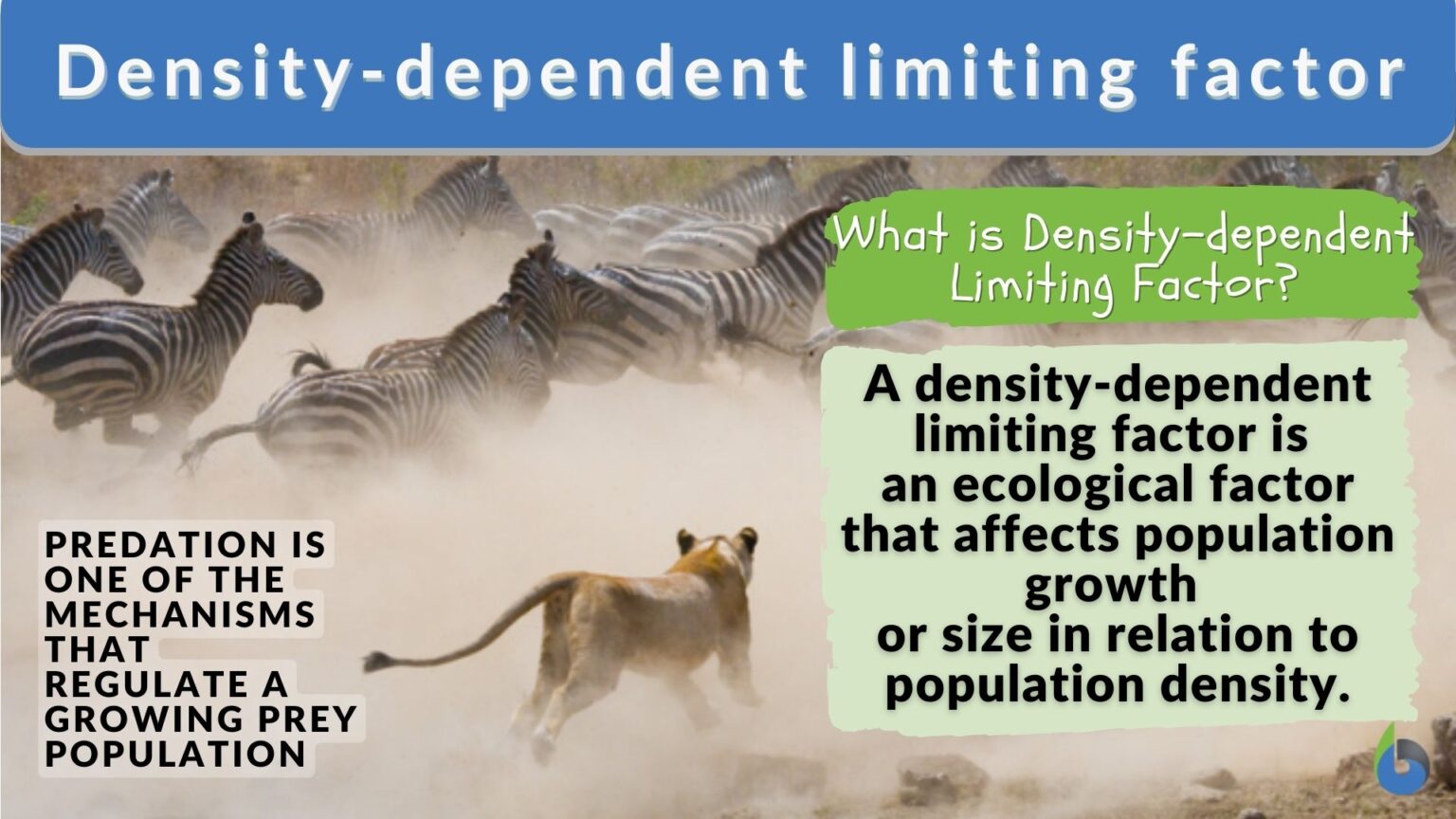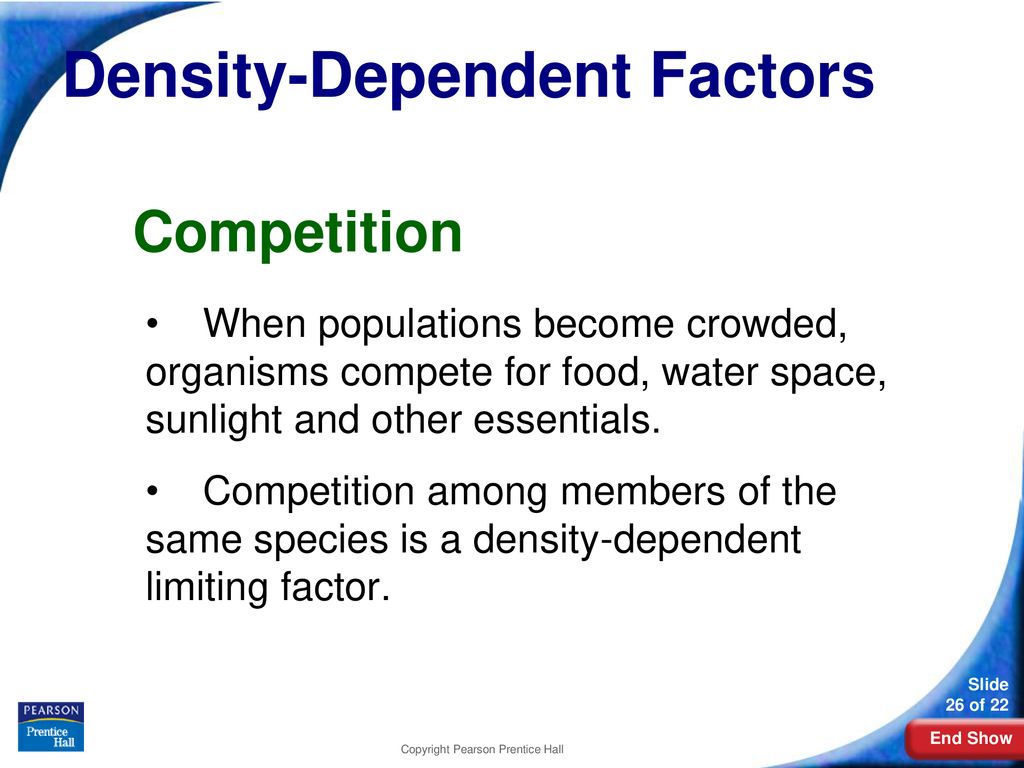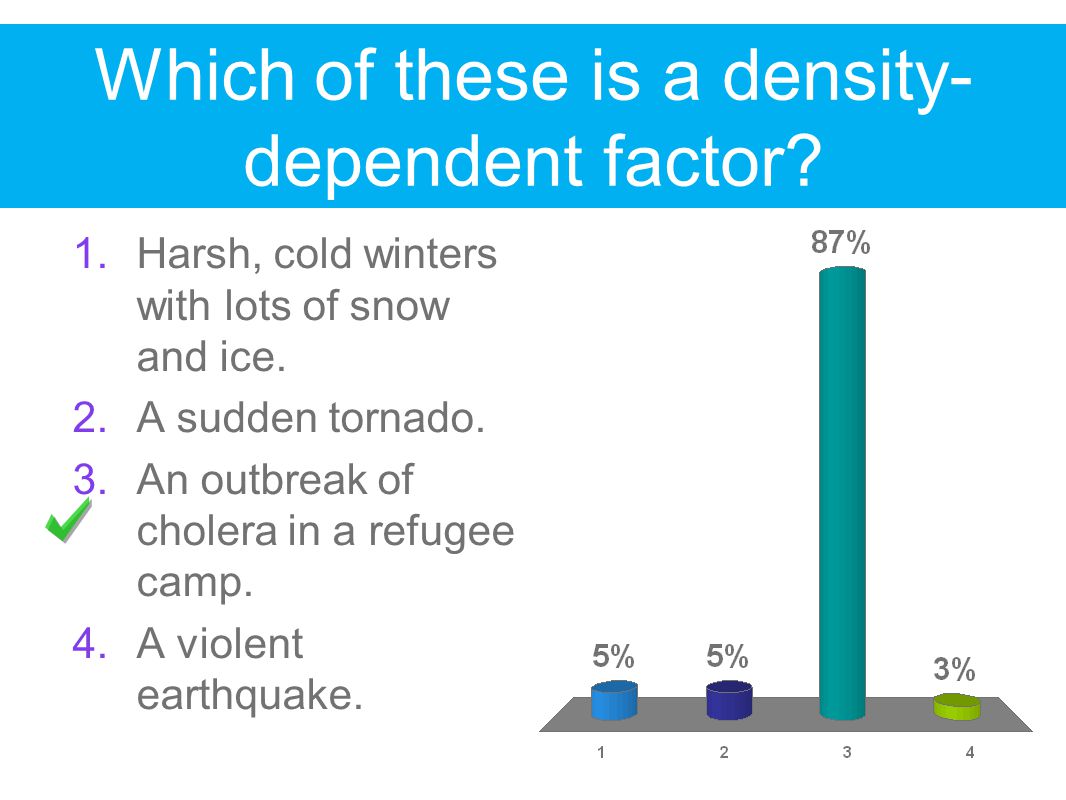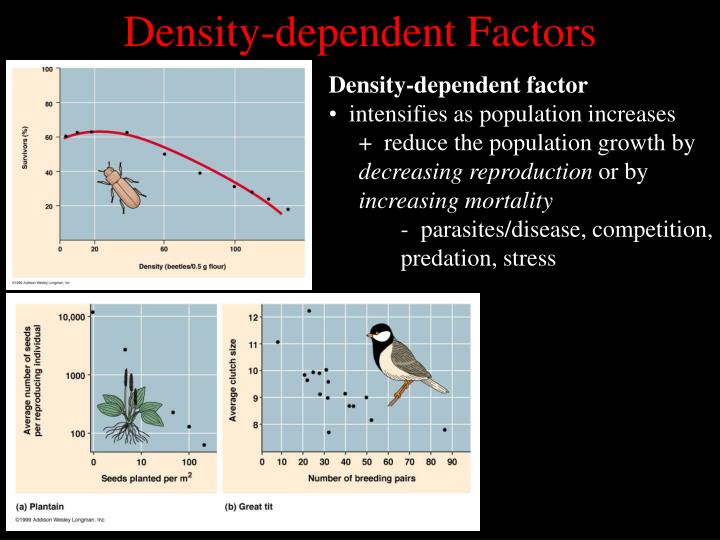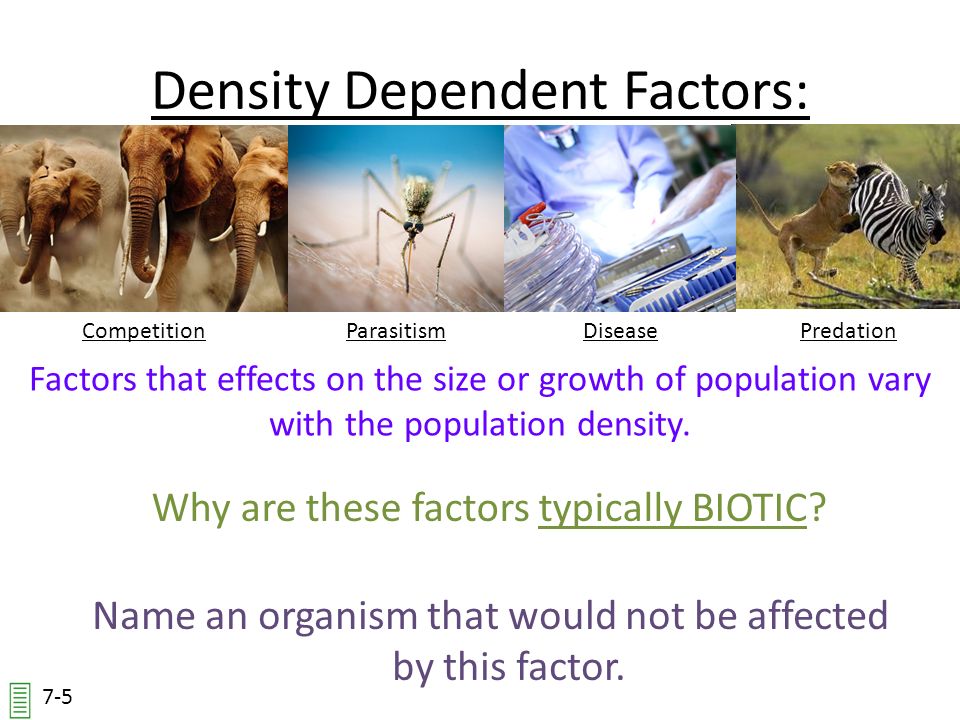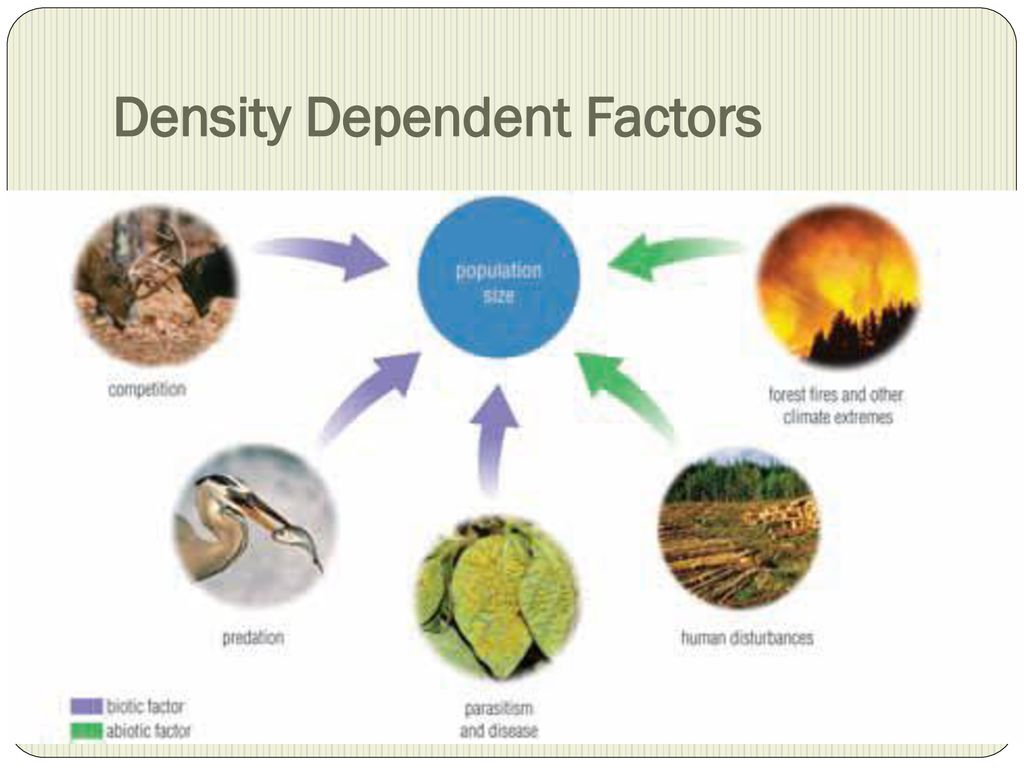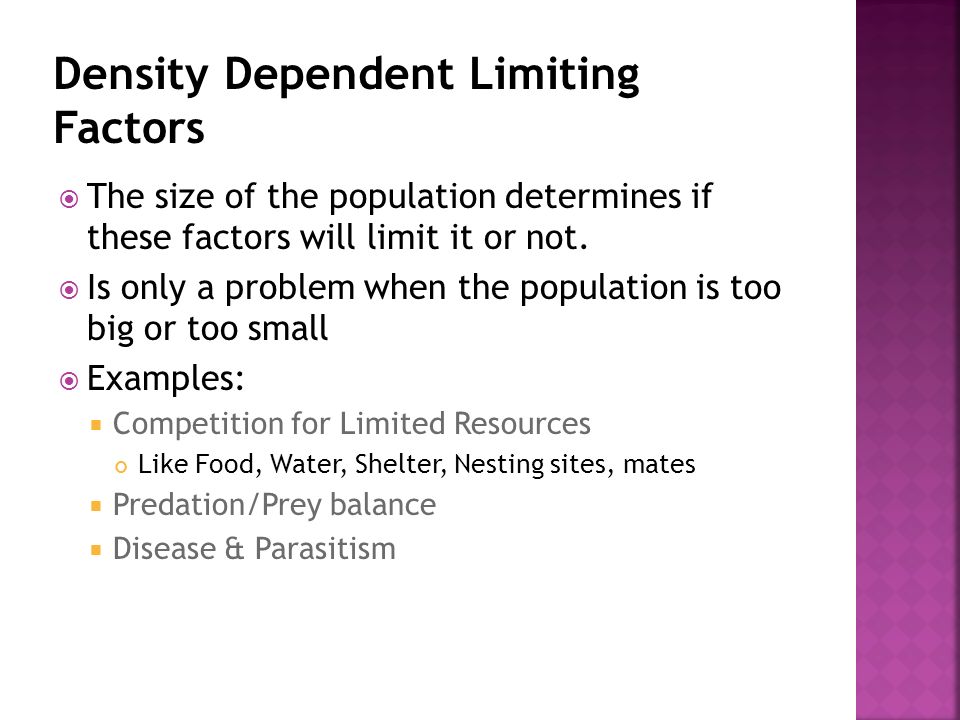Which Of These Is A Density-dependent Factor
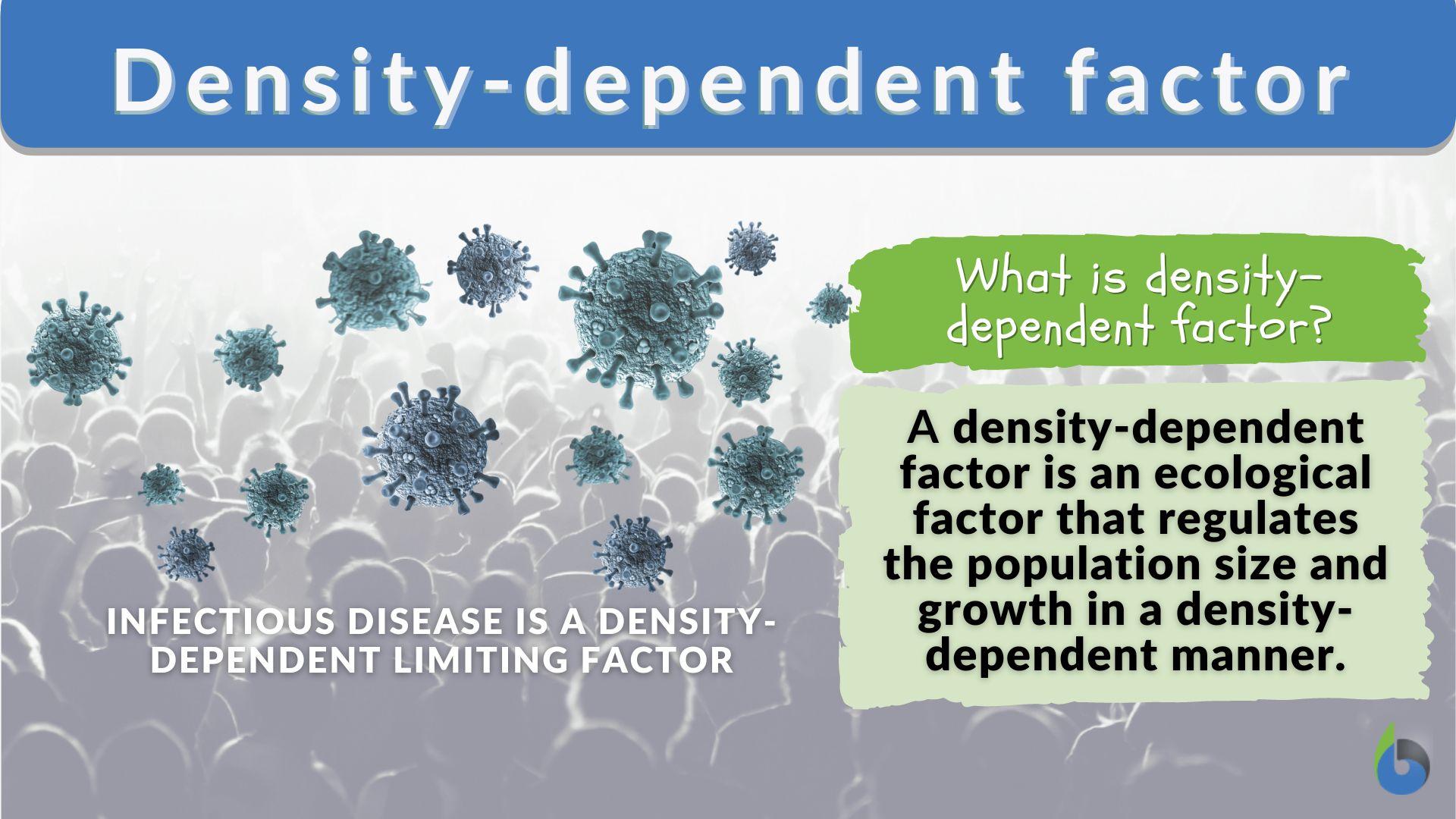
Ecologists are scrambling to understand a sharp decline in several key species populations. Experts are pointing towards density-dependent factors as the primary driver, but pinpointing the exact culprit remains a challenge.
The sudden population shifts are raising alarms about potential ecosystem collapse and the need for immediate conservation action.
Density-Dependent Factors: The Prime Suspects
Density-dependent factors are environmental influences where the effect on a population changes with the population's size or density. These factors play a crucial role in regulating population growth.
Unlike density-independent factors, which affect a population regardless of its size (e.g., natural disasters), density-dependent factors become more pronounced as populations become more crowded.
Competition
Competition, a classic density-dependent factor, intensifies as population density increases. Individuals within a population compete for limited resources such as food, water, shelter, and sunlight.
Increased competition can lead to decreased birth rates, increased death rates, or both, ultimately slowing population growth.
Predation
Predation is another significant density-dependent regulator. As prey populations grow denser, they become easier targets for predators.
This increased predation pressure can significantly reduce prey populations, helping to maintain ecological balance.
Parasitism and Disease
Parasitism and the spread of disease are profoundly influenced by population density. Denser populations provide ideal conditions for parasites and pathogens to thrive and spread rapidly.
Outbreaks of disease can decimate populations, especially in environments where resources are already strained.
Resource Availability
Limited resource availability is a key driver of density-dependent effects. As populations grow, the demand for resources such as food, water, and space increases.
When resources become scarce, competition intensifies, leading to reduced survival and reproduction rates.
Excluding Other Factors
Researchers are meticulously examining data to rule out other potential causes. Density-independent factors, such as extreme weather events or habitat destruction, are being carefully assessed.
However, preliminary analysis suggests that the observed population declines are more closely linked to the impact of density-dependent mechanisms.
Data From Affected Regions
Field studies conducted in affected regions indicate a strong correlation between population density and mortality rates. High-density populations are experiencing significantly higher death rates compared to lower-density populations.
Analysis of food sources reveals that competition for resources is becoming increasingly intense, leading to malnutrition and weakened immune systems.
The Role of Carrying Capacity
These findings underscore the importance of understanding carrying capacity – the maximum population size that an environment can sustainably support. Exceeding the carrying capacity triggers density-dependent effects, often leading to population crashes.
The current data suggests that some populations have surpassed their carrying capacity, resulting in the observed declines.
Immediate Actions and Future Research
Conservation efforts are being focused on mitigating the effects of density-dependent factors. This includes strategies such as habitat restoration, managing predator populations, and implementing disease control measures.
Further research is crucial to fully understand the complex interactions between density-dependent factors and population dynamics. Long-term monitoring programs are essential to track population trends and assess the effectiveness of conservation interventions.
Understanding these processes is critical to preventing further ecological damage.
